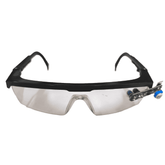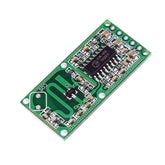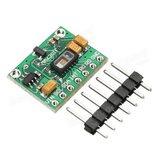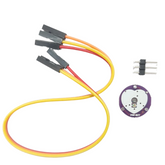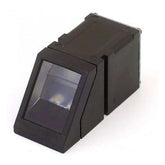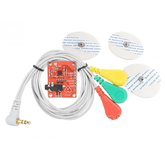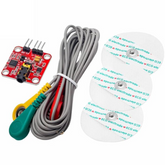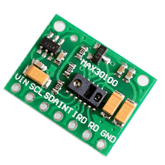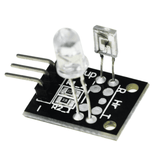Biomedical Sensors: Types & Working
Summary
Explore the fascinating world of Biomedical Sensors in our latest blog! Uncover the intricacies of these life-saving devices as we delve into their Introduction, Types, and Working Mechanisms. Discover the critical Performance Metrics that drive their reliability and effectiveness. From revolutionary Applications in healthcare to Future Horizons shaping medical technology, this blog unveils the pulse of Biomedical Sensors. Don't miss our insightful Conclusion, wrapping up the journey through cutting-edge innovations and their impact on the future of healthcare. Click now for a captivating dive into the realm of Biomedical Sensors!
Introduction
Biomedical sensors are ingenious devices utilized to detect or quantify physiological elements and provide pivotal data to decipher the health status of living organisms. They glean insights into the anatomy, physiology and metabolic functionalities in recondite minutiae, thus conferring an indispensible role in contemporary medical research and practice.
An array of biomedical sensors are calibrated to ascertain electrical, chemical, acoustic or mechanical manifestations that are indicative of an underlying physiological activity. The burgeoning integration of cutting-edge engineering with in-depth comprehension of biological intricacies has engendered radical advancements in biomedical sensors over the past decade. State-of-the-art biomedical sensors are being relentlessly incorporated into wearable gadgets, medical instruments, analytical equipment, imaging systems and implants to acquire quantitative vital signs and metrics to optimize diagnostics and therapeutic modalities. Their unprecedented applications presage radical transformation of healthcare by enabling real-time patient monitoring, early disease detection, personalized medicine and smart instrumentation in future.
Types of Biomedical Sensors
A surfeit of biomedical sensors are available today built upon electrical, mechanical or acoustic transduction mechanisms to trace biomarkers.
- Bioelectric Sensors: Bioelectric sensors discern and decode electrical impulses generated by various physiological activities. Electrocardiograms (ECG) utilize electrodes attached to the skin to perceive electrical indications of heart rhythm. Electroencephalography (EEG) measures scalp electrical currents elicited by synaptic excitations in the brain. Electromyography (EMG) involves assessment of electrical discharges produced due to muscle contractions. Other common bioelectric sensors include electrooculogram, electrogastrogram, electroretinogram, electronystagmography etc. that fathom ocular, gastric, retinal and vestibular functions respectively.

- Biochemical Sensors: Biochemical sensors quantify concentrations of specific biomolecules like enzymes, antibodies, DNA or metabolites like glucose, cholesterol etc. in biological milieu. Home-based blood glucose monitors rely on disposable test strips with glucose oxidase biosensors that induce electrical signals upon interacting with blood glucose. DNA microarrays contain microscopic DNA probes on solid surfaces to determine genetic expression profiles. Enzyme-linked immunosorbent assays use antigen-antibody affinity to quantitate proteins, peptides, antibodies or hormones down to picograms levels. Ion-selective electrodes containing ionophore polymers measure electrolyte ions like sodium, potassium and chloride in physiological system.

- Bioacoustic Sensors: Bioacoustic sensors register and investigate acoustic energy originating from biological entities. Stethoscopes and phonocardiograms have long been employed to acquire heart sounds and murmurs holding subtle clues on cardiac pathologies. Ultrasonography visualizes soft tissue anatomy in fine detail by bouncing high-frequency sound waves off tissues. Doppler sensors determine velocity of red blood cells by assessing frequency shifts in reflected ultrasound signals. Audiometers are routinely applied to determine hearing capacity over various sound frequencies and intensities.

- Biomechanical Sensors: Biomechanical sensors evaluate mechanical forces, movements or material properties of biological structures. Blood pressure gauges dependent on inflatable cuffs are ubiquitously used to evaluate hypertension. Capnographs use infrared absorption to estimate carbon dioxide levels in respiratory gases during anesthesia or critical care. Pulse oximeters employ photoplethysmography to ascertain both heart rate and oxygen saturation. Bone densitometers quantify calcium content in bones to screen osteoporosis. Several implantable biomechanical sensors are in different phases of development to assess intraocular pressure, intracranial pressure.

Check out our collection of sensor at best prices!
Working Mechanism
Most biomedical sensors encompass three elementary components viz. receptors, transducers and signal processors. Receptors interact with the analyte while transducers convert input energy into measurable electrical outputs. Signal processors digitize the signals for further amplification, filtering and display. For instance, temperature sensors contain thermocouple receptors that generate small voltages based on temperature differences. The voltages are fed to analog-to-digital converters and displayed. Biomedical images constitute two-dimensional sensor arrays with each pixel acting as separate sensor.
Microfabrication forms the cornerstone for biomedical sensors enabling batch production of micrometer or nanometer scale sensor elements. Nanotechnology expands their versatility by reconciling high sensitivity with minimum invasiveness. Microfluidic channels facilitate transport of nanoliter fluid volumes across miniaturized testing platforms. Multiplexing incorporates several sensing modalities on single chip devices. Wireless interfaces equip state-of-the-art biomedical sensors to transmit data to portable devices. Implantation permits continuous surveillance of previously inaccessible biomarkers.
Performance Metrics
Accuracy, sensitivity, selectivity, linearity, precision and robustness constitute key yardsticks to evaluate biomedical sensors. Sensor calibration over the physiological range with recognized gold standards minimizes inaccuracy. Sensitivity denotes the slightest detectable variation in analyte concentration.
Selectivity relates to specific analyte recognition sans interference. Linearity implies proportional electrical response over the analytical range. Sensor precision indicates reproducibility across repetitive measurements. Durability, biocompatibility and radio-opaqueness (for imaging) determine ruggedness and reliability. Regular recalibrations offset temporal signal drifts or biological fouling.
Applications
- Medical Provisioning:
Problem-oriented patient monitors: Diagnose and manage critical patients during surgery or intensive care.
Implantable sensors: Continuous monitoring via telemetry data transfer.
Wearable sensors: Monitor fitness and vital signs in watches, bands, patches, or clothing.
Point-of-care diagnostics: Portable miniaturized sensors replacing expensive lab equipment.
- Pharmaceutical Research:
High-throughput drug screening: Quantify therapeutic efficacy and toxicity of drugs using biosensors.
- Personalized Medicine:
Genomic, proteomic, and metabolic profiling: Advancements for tailored medical treatments.
Prosthetics and Assistive Robotics:
Sensor-enhanced prosthetics: Restore sensory-motor functions.
- Healthcare Industry:
Improved patient care: Faster and more accurate diagnoses, better treatment monitoring.
Reduced healthcare costs: Remote monitoring, early detection of issues.
Future Horizons
Continuing interdisciplinary collaborations between engineers, physicists, biologists and clinicians will conceive more sophisticated and omnipotent biomedical sensors in foreseeable future. Nanoengineering of sensor components allows leveraging higher sensitivity despite substantial downscaling. Innovations in material science extend sensor flexibility, stretchability and durability for seamless integration into wearable gadgets or implants. Wireless interfaces and power sources liberate next-gen sensors from cumbersome wired connections. Swarms of microscopic, independent sensors promise deeper insights through data convergence.
Future biomedical sensors are envisaged that may be organelle-specific, continuously tracking panel of biomarkers. Ingestible sensors could screen the gut for pathogens, allergens, nutrients or cancers. Implantable blood analyzers appear on the imminent horizon. Cerebral sensors may someday unravel neurochemical enigmas underlying emotions, creativity or dreams. However, rigorous optimization is warranted to improve tissue tolerance, long-term stability and mass production feasibility before these sensors pervade clinical practice. Their ecological ramifications also necessitate closer scrutiny.
While biomedical sensors will become ubiquitous in hospitals or homes for medical monitoring in upcoming decades, high costs may hamper their percolation into healthcare systems in developing countries initially. Stringent regulatory sanctions need to establish quality control, efficacy and safety prior to their mainstream invasion. Reimbursement policies must be fine-tuned to accommodate these innovative devices within healthcare financing models. Nevertheless, biomedical sensors shall undeniably orchestrate a paradigm shift from reactive medical care towards more patient-centric and preventative medicine sooner than later.
Conclusion
Biomedical sensors promise to emerge amongst the trailblazers spearheading radical reconfiguration of tomorrow’s healthcare landscape with wider penetration in point-of-care testing or patient monitoring applications. Their untapped potential to provide real-time functional assessment by constant surveillance of health status seems fascinating. Assimilation with modern communication networks and portable computing gadgets foretell an era where human health can be monitored anywhere, anytime! Biomedical sensors thus constitute indispensable harbingers to usher in future innovations ranging from programmed drug delivery, robotic surgery to fully-automated medical care in conjunction with artificial intelligence that once seemed like distant dreams.
Frequently Asked Questions
1. What is a biomedical sensor?
Biomedical sensors are cutting-edge devices that continuously monitor and measure various aspects of the human body's health, like heart rate, blood pressure, and oxygen levels. They use sophisticated technologies such as electrodes and optical systems to gather accurate data in real-time. These sensors have transformed medical care, allowing doctors to diagnose conditions like heart disease earlier with tools like ECGs, and helping patients manage chronic conditions like diabetes with continuous glucose monitoring. Beyond clinical settings, they also hold potential for fitness tracking and preventive healthcare, empowering individuals to take charge of their own health. The latest advancements, like portable wireless sensors, further enhance this impact by enabling continuous monitoring without disrupting daily activities. This innovation has not only improved patient care but also reduced healthcare costs by decreasing hospital visits, making it a truly revolutionary development in the field of healthcare technology.
2. What are the examples of biomedical sensors?
Biomedical sensors are vital tools in the field of healthcare, enabling accurate and timely detection of a variety of physiological parameters. These sensors play a crucial role in monitoring patient health, diagnosing diseases, and tracking treatment progress. At Robocraze, we offer an extensive range of high-quality biomedical sensors that cater to diverse medical needs. Some noteworthy examples include pulse oximeters for measuring oxygen saturation levels in the blood, electrocardiogram (ECG) monitors for evaluating heart activity patterns, temperature probes for recording body temperatures accurately, and glucose meters for checking blood sugar levels. With our cutting-edge technology and precision-engineered designs from top brands like Max30102 Pulse Oximeter Sensor Module or AD8232 ECG Measurement Kit - you can trust us to provide reliable solutions tailored to your specific requirements.
3. Why biomedical sensors are important?
Biomedical sensors have revolutionized the healthcare industry by enabling real-time, precise monitoring of vital signs like heart rate, blood pressure, and brain activity. These essential tools have become crucial for diagnosing diseases like heart failure early through continuous ECG monitoring, managing chronic conditions like diabetes with real-time glucose levels, and even predicting potential health risks through advanced biosensing algorithms. By providing valuable insights into the body's inner workings, they empower medical professionals to make informed decisions and tailor treatment plans, often leading to early detection and prevention of further complications. Technological advancements have not only miniaturized these sensors but also made them more reliable and cost-effective, paving the way for personalized medicine through continuous remote monitoring from the comfort of one's home. This shift towards proactive healthcare, facilitated by these indispensable sensors, promises to significantly improve overall wellness, reduce hospital visits, and ultimately reshape the future of healthcare delivery.
4. What is the working principle of biomedical sensors?
The magic of biomedical sensors lies in their ability to detect, measure, and convert biological signals like heartbeats, blood oxygen levels, or brain waves into electronic signals. They employ diverse methods like measuring electrical impedance changes for blood pressure, light absorption in tissues for oxygenation, or detecting specific ions for glucose levels. These captured signals are then amplified, filtered, and translated into digital data for analysis by medical professionals. This powerful capability opens doors to continuous monitoring in hospitals and wearable devices for remote patient care. Imagine being able to detect subtle heart rhythm changes with an ECG at home, potentially catching arrhythmias before they lead to major complications. With advancements in miniaturization and accuracy, coupled with the growing demand for personalized healthcare, the use of these versatile sensors is poised to experience explosive growth, shaping the future of healthcare by empowering individuals and revolutionizing preventative care.
5. What are biomedical sensors?
Biomedical sensors are devices that detect and measure biological signals, such as heart rate, glucose levels, and temperature. They play a crucial role in healthcare, enabling continuous monitoring of patients' health and facilitating timely medical interventions. These sensors are essential for diagnostics, therapeutic purposes, and research in biomedical sciences.
6. How do biomedical sensors work?
Biomedical sensors operate by converting biological signals into measurable electrical signals. They often consist of a sensitive element, transducer, and signal processing unit. When a biological event occurs, such as a change in glucose levels, the sensor detects this change and transmits data for analysis. This process helps provide real-time health information.
7. What are the types of biomedical sensors?
Types of biomedical sensors include temperature sensors, ECG sensors, glucose sensors, and pressure sensors. Each type is designed for specific applications, such as monitoring vital signs or detecting biochemical changes. Wearable sensors have gained popularity for their convenience and continuous monitoring capabilities, making healthcare more accessible.
8. What are examples of biosensors in healthcare?
Examples of biosensors in healthcare include glucose meters for diabetes management, ECG sensors for heart health monitoring, and pulse oximeters that measure oxygen saturation levels. These devices provide critical data that help in diagnosing conditions and managing patient care effectively, contributing to improved health outcomes.
9. How are biomedical sensors used in IoT?
Biomedical sensors integrated into the Internet of Things (IoT) facilitate remote health monitoring. These sensors collect data and transmit it to cloud platforms for real-time analysis. This connectivity allows healthcare providers to monitor patients' conditions remotely, ensuring timely interventions and enhancing patient engagement through data-driven insights.
10. What materials are used in biosensors?
Biosensors commonly utilize materials like enzymes, antibodies, and conductive polymers, which enhance sensitivity and specificity. These materials are engineered to interact with target analytes, such as glucose or biomarkers, ensuring accurate readings. Advanced materials like nanomaterials are also being researched for their potential to improve biosensor performance.
11. How do temperature and ECG sensors differ?
Temperature sensors measure body or environmental temperature, providing critical data on thermal regulation. In contrast, ECG sensors monitor electrical activity in the heart, helping to diagnose cardiac issues. While both are essential for health monitoring, they serve different physiological functions and provide distinct types of data.
12. What are wearable biomedical sensors?
Wearable biomedical sensors are compact devices designed for continuous health monitoring on the body. Examples include smartwatches with heart rate monitors and fitness trackers that measure activity levels. These devices capture real-time data, enhancing personal health management and allowing users to track their wellness over time.
13. How do biomedical sensors transmit data?
Biomedical sensors transmit data using wireless technologies like Bluetooth, Wi-Fi, or cellular networks. Data collected from the sensor is sent to smartphones, computers, or cloud storage for processing and analysis. This wireless communication enables real-time monitoring and alerts, improving patient management and timely responses.
14. What are the future trends in biomedical sensing?
Future trends in biomedical sensing include more advanced wearable technologies, enhanced connectivity through 5G, and the integration of AI for data analysis. Innovations in materials will lead to more sensitive and accurate sensors. Additionally, personalized medicine will leverage these advancements for tailored health solutions, transforming patient care.
1. What is a biomedical sensor?
Biomedical sensors are cutting-edge devices that continuously monitor and measure various aspects of the human body's health, like heart rate, blood pressure, and oxygen levels. They use sophisticated technologies such as electrodes and optical systems to gather accurate data in real-time. These sensors have transformed medical care, allowing doctors to diagnose conditions like heart disease earlier with tools like ECGs, and helping patients manage chronic conditions like diabetes with continuous glucose monitoring. Beyond clinical settings, they also hold potential for fitness tracking and preventive healthcare, empowering individuals to take charge of their own health. The latest advancements, like portable wireless sensors, further enhance this impact by enabling continuous monitoring without disrupting daily activities. This innovation has not only improved patient care but also reduced healthcare costs by decreasing hospital visits, making it a truly revolutionary development in the field of healthcare technology.
2. What are the examples of biomedical sensors?
Biomedical sensors are vital tools in the field of healthcare, enabling accurate and timely detection of a variety of physiological parameters. These sensors play a crucial role in monitoring patient health, diagnosing diseases, and tracking treatment progress. At Robocraze, we offer an extensive range of high-quality biomedical sensors that cater to diverse medical needs. Some noteworthy examples include pulse oximeters for measuring oxygen saturation levels in the blood, electrocardiogram (ECG) monitors for evaluating heart activity patterns, temperature probes for recording body temperatures accurately, and glucose meters for checking blood sugar levels. With our cutting-edge technology and precision-engineered designs from top brands like Max30102 Pulse Oximeter Sensor Module or AD8232 ECG Measurement Kit - you can trust us to provide reliable solutions tailored to your specific requirements.
3. Why biomedical sensors are important?
Biomedical sensors have revolutionized the healthcare industry by enabling real-time, precise monitoring of vital signs like heart rate, blood pressure, and brain activity. These essential tools have become crucial for diagnosing diseases like heart failure early through continuous ECG monitoring, managing chronic conditions like diabetes with real-time glucose levels, and even predicting potential health risks through advanced biosensing algorithms. By providing valuable insights into the body's inner workings, they empower medical professionals to make informed decisions and tailor treatment plans, often leading to early detection and prevention of further complications. Technological advancements have not only miniaturized these sensors but also made them more reliable and cost-effective, paving the way for personalized medicine through continuous remote monitoring from the comfort of one's home. This shift towards proactive healthcare, facilitated by these indispensable sensors, promises to significantly improve overall wellness, reduce hospital visits, and ultimately reshape the future of healthcare delivery.
4. What is the working principle of biomedical sensors?
The magic of biomedical sensors lies in their ability to detect, measure, and convert biological signals like heartbeats, blood oxygen levels, or brain waves into electronic signals. They employ diverse methods like measuring electrical impedance changes for blood pressure, light absorption in tissues for oxygenation, or detecting specific ions for glucose levels. These captured signals are then amplified, filtered, and translated into digital data for analysis by medical professionals. This powerful capability opens doors to continuous monitoring in hospitals and wearable devices for remote patient care. Imagine being able to detect subtle heart rhythm changes with an ECG at home, potentially catching arrhythmias before they lead to major complications. With advancements in miniaturization and accuracy, coupled with the growing demand for personalized healthcare, the use of these versatile sensors is poised to experience explosive growth, shaping the future of healthcare by empowering individuals and revolutionizing preventative care.
5. What are biomedical sensors?
Biomedical sensors are devices that detect and measure biological signals, such as heart rate, glucose levels, and temperature. They play a crucial role in healthcare, enabling continuous monitoring of patients' health and facilitating timely medical interventions. These sensors are essential for diagnostics, therapeutic purposes, and research in biomedical sciences.
6. How do biomedical sensors work?
Biomedical sensors operate by converting biological signals into measurable electrical signals. They often consist of a sensitive element, transducer, and signal processing unit. When a biological event occurs, such as a change in glucose levels, the sensor detects this change and transmits data for analysis. This process helps provide real-time health information.
7. What are the types of biomedical sensors?
Types of biomedical sensors include temperature sensors, ECG sensors, glucose sensors, and pressure sensors. Each type is designed for specific applications, such as monitoring vital signs or detecting biochemical changes. Wearable sensors have gained popularity for their convenience and continuous monitoring capabilities, making healthcare more accessible.
8. What are examples of biosensors in healthcare?
Examples of biosensors in healthcare include glucose meters for diabetes management, ECG sensors for heart health monitoring, and pulse oximeters that measure oxygen saturation levels. These devices provide critical data that help in diagnosing conditions and managing patient care effectively, contributing to improved health outcomes.
9. How are biomedical sensors used in IoT?
Biomedical sensors integrated into the Internet of Things (IoT) facilitate remote health monitoring. These sensors collect data and transmit it to cloud platforms for real-time analysis. This connectivity allows healthcare providers to monitor patients' conditions remotely, ensuring timely interventions and enhancing patient engagement through data-driven insights.
10. What materials are used in biosensors?
Biosensors commonly utilize materials like enzymes, antibodies, and conductive polymers, which enhance sensitivity and specificity. These materials are engineered to interact with target analytes, such as glucose or biomarkers, ensuring accurate readings. Advanced materials like nanomaterials are also being researched for their potential to improve biosensor performance.
11. How do temperature and ECG sensors differ?
Temperature sensors measure body or environmental temperature, providing critical data on thermal regulation. In contrast, ECG sensors monitor electrical activity in the heart, helping to diagnose cardiac issues. While both are essential for health monitoring, they serve different physiological functions and provide distinct types of data.
12. What are wearable biomedical sensors?
Wearable biomedical sensors are compact devices designed for continuous health monitoring on the body. Examples include smartwatches with heart rate monitors and fitness trackers that measure activity levels. These devices capture real-time data, enhancing personal health management and allowing users to track their wellness over time.
13. How do biomedical sensors transmit data?
Biomedical sensors transmit data using wireless technologies like Bluetooth, Wi-Fi, or cellular networks. Data collected from the sensor is sent to smartphones, computers, or cloud storage for processing and analysis. This wireless communication enables real-time monitoring and alerts, improving patient management and timely responses.
14. What are the future trends in biomedical sensing?
Future trends in biomedical sensing include more advanced wearable technologies, enhanced connectivity through 5G, and the integration of AI for data analysis. Innovations in materials will lead to more sensitive and accurate sensors. Additionally, personalized medicine will leverage these advancements for tailored health solutions, transforming patient care.



